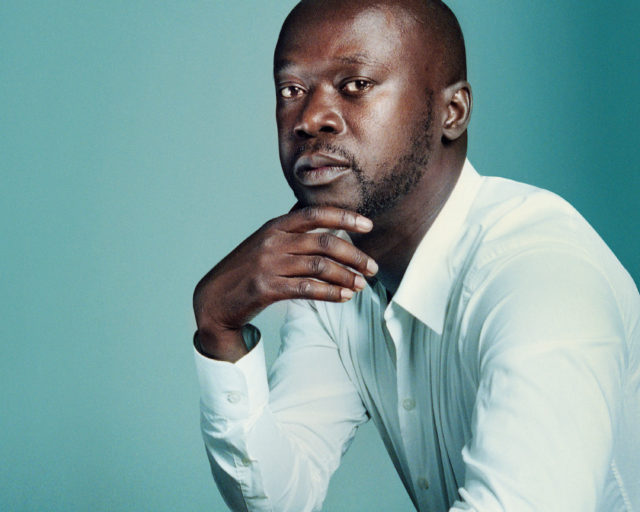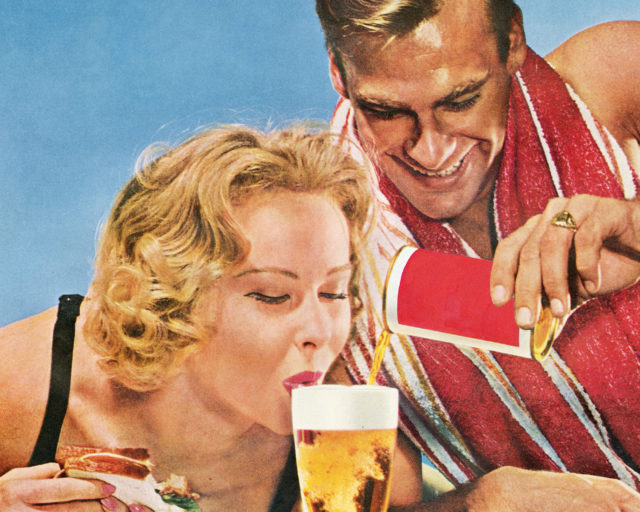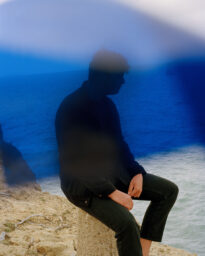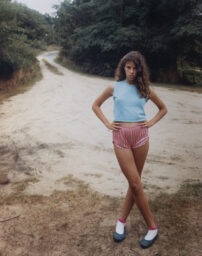How David Alekhuogie Navigates the Colonial Past
The LA-based photographer speaks about Walker Evans, Black aesthetics, and how a frightening encounter with the police informed his thinking about art.
David Alekhuogie, post colonial bush breakfast "no wahala" (detail), 2021
For his recent exhibition at Yancey Richardson Gallery, David Alekhuogie worked with photography, collage, and sculpture to produce a visual meditation on his artistic and cultural lineage. His source materials—cotton jersey fabric, wax print fabric, the 1935 exhibition catalogue of Walker Evans’s photographs of African sculptures—are varied and all approached with a tendency towards abstraction. In one series, titled To Live and Die in LA (2018), his fascination is with the body as landscape and with the ways that the body, when photographed, can indicate the tensions and vulnerabilities of its stance. The most acclaimed of his photographs in that series show the midriff area of Black male bodies, the subject of his earlier work Pull-Up (2017), pictured so that low-slung pants seem like bright tapestries. In 2019, when Alekhuogie first visited Nigeria, where his father is from, he created new photographs using a similar strategy, placing the images against a background of floral wax print fabric.
Talking to Alekhuogie feels similar to looking at his photographs: both indicate the possibility of thinking in multiple directions at once. He is a photographer interested in generative thought and in images that do not overexplain, even if they are informed by moments of vulnerability, masculinity, and disposability—such as an encounter with the police near his studio in Los Angeles, when, with their weapons pointed at him, he felt his mortality in a “hyper-realized way.” What follows is a conversation touching on the key themes in his work, in which my questions served only as prompts for his superlative digressions.

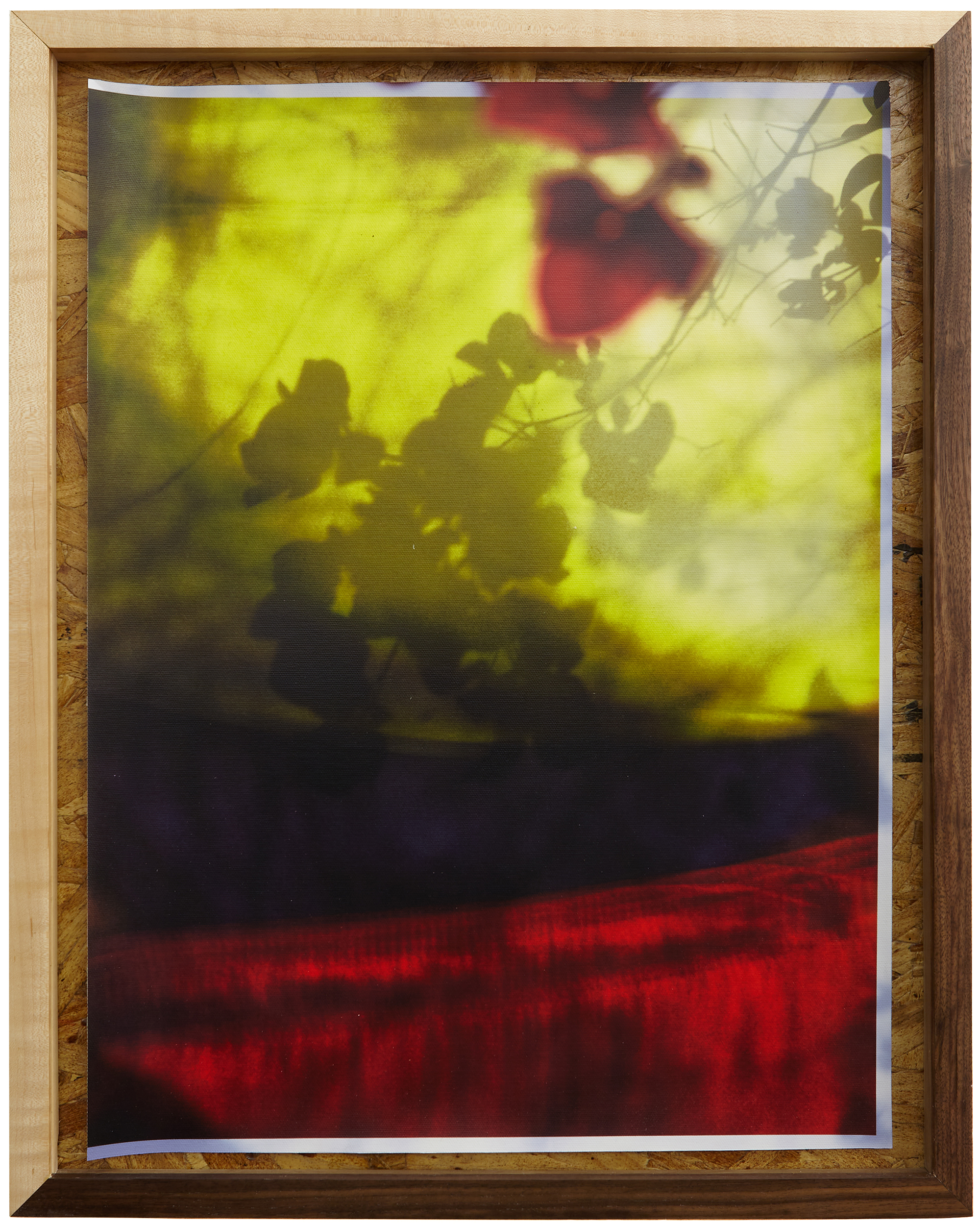
Emmanuel Iduma: I want to begin with a quote of yours that was included in your Aperture portfolio in the magazine’s 2018 “Los Angeles” issue. You said, “It’s not always the storytelling. Sometimes it’s the accent, the cadence, the how: how a person is speaking, how they are telling the story.” You are speaking about strategies you used in Pull-Up (2017). But I want to know if you remain interested in rhetoric as a way of understanding your visual work.
David Alekhuogie: Definitely. It’s something I’ve been thinking about even more in some of this newer work. When I was making Pull-Up, I was specifically interested in Abstract Expressionism and the way that American modernism had developed around these ideas of abstraction. I still think about modernity as being constantly defined by our relationship with labor and technology. Yet, that part of it seemed to really discount the way different types of marginalized people in the country function.
I grew up DJing a lot. I was DJing parties. I studied jazz for a while. And I would think about this idea of improvisation and abstraction coming out of this kind of structural space—abstraction as a type of protest, where you’re doing your job, you’re getting from point A to point B. But in getting from point A to point B, you’re going to use this opportunity as an expressive moment. And I had been thinking about the relationship between jazz, modernity, and modern painting, as being . . . I wouldn’t call it erasure, but I would definitely call it a misunderstanding of the contributions of African American, radical Black aesthetics.

Iduma: Let me get a sense of how you got started as a visual artist. You’ve described a potpourri of influences, which is visible in your newest work.
Alekhuogie: A lot of this new work I made during the pandemic. But it is a long time coming. I believe wholeheartedly that African and African American studies departments, at least in the States, are populated with people who are in this kind of coming-of-age moment—or maybe that moment is perpetual. There’s this energy for reeducation, for a point of view that they see as compromise or a line of questioning that they see as incomplete. At least that was my relationship to it. That was the relationship of my peers. It seemed like their own frustrations with that is what pulled them into this research. It became critical.
My new body of work is about this way of thinking through Walker Evans and Frantz Fanon. It’s my way of dealing with seeing myself as the colonized intellectual—like the Black friends who give the liberal elite this sense of authority and moral righteousness. And I started to see these characters play out in this modern thing. Everybody is navigating their own pathologies through the consequences of a colonial past, you know?
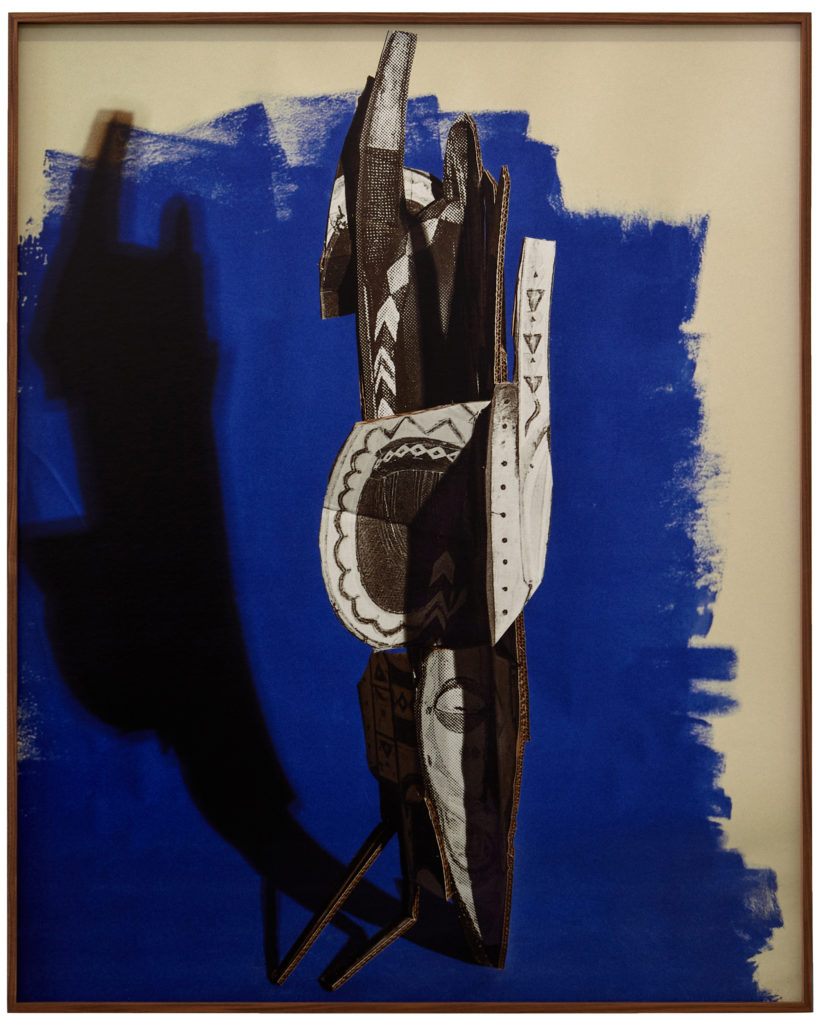
Iduma: I like the idea that, for you, there is the possibility of making the connection between modernism and colonialism. The “modernist movement” in Nigerian art—or what is classified as modernism in Nigeria and art history—is really just at the end of the active colonization process and the beginning of the independent years.
At that time, people were saying that we need to think about what it means for us to have had the education that we’ve had. They evolved the conversation beyond colonialism into something that draws from the experience or the pathology of colonialism. For me, this all comes to a head in the work you did after you came to Nigeria in 2019. Before then, had you ever been here? And what spurred you to travel here?
Alekhuogie: I had wanted to go for a very long time. Originally I felt like I wasn’t permitted to go without my father’s consent. And things like visas, the financial burden, really kept me at bay. Then there came a point when I could afford to travel and stay for extended amounts of time. I got this grant from the Rema Hort Mann Foundation. I also think that the work was doing well at that point. So I think that once I had the resources, I started to really commit to making it happen. Honestly, when you wanna do a thing, you find the resources to do the thing.
Iduma: How did you travel in Nigeria? What places did you visit?
Alekhuogie: I had some friends in Tanzania and Kenya so I went there first. One of my friend’s parents is also Nigerian so we were able to negotiate the visas pretty easily. We went straight to Lagos and Lekki after that. And we were supposed to go to Benin City for a wedding but were not able to make that happen because I had teaching obligations.
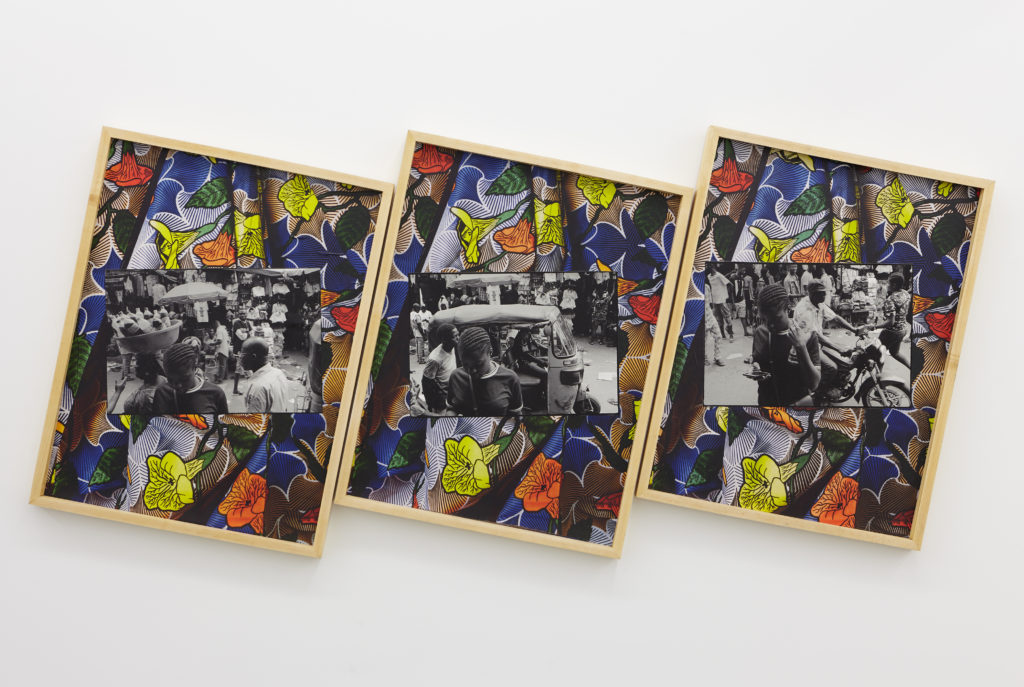
Iduma: You’ve spoken in previous interviews of being interested in the body as landscape. My sense is that your understanding of that concept is evolving or even expanding as, for instance, in the transition from Pull-Up to To Live and Die in LA. I’m curious where you are at this point with that concept.
Alekhuogie: In one way, this has to do with a sexual pathology around a conquered space versus something that is remarkable, uncontrollable, and beyond your comprehension. That is the historical relationship that we have to the landscape and the sublime—this space to be conquered but also this space to be made small or made weak. That was something that I was interested in, in terms of the relationships that we have to people. Because we think about race relations or the various forms of oppression that people suffer globally as being localized. I wanted to ask whether a person’s body could be considered a place, whether it could be occupied or not, and what that would be like politically.
To Live and Die in LA was more a response to what I would call this choice to accept the terms of my situation. I had gone through this traumatic experience near my studio, where the police barged in, and they pointed weapons at me and handcuffed me. It was crazy, you know? I had a bunch of stuff in my hands when they came in. The sun was setting in a way where they couldn’t see me well, and I couldn’t see them well. The sun was shining into my face. I could see that they were pointing a bunch of weapons at me, but I couldn’t see them quite clearly.
In that moment, I felt my mortality in this hyper-realized way. As a writer, an artist, a filmmaker—whatever it is that you’re doing—if you’re talking about these types of lived experiences, you need a certain distance from them. And navigating that distance requires this emotional energy that is at the root of a lot of Black music. At least when I think about how the blues, for example, was historicized, it’s about coming to terms with your own condition.
I was making work for a long time that unknowingly responded to that. I had started to think about the music that I was listening to differently, especially a whole type of politicized music that is really not about action but more about acceptance. I think that those records become anthems. The modern one that I think about now is the Kendrick Lamar track, “Alright.” It’s this political battle cry. It’s about understanding and living in the condition that you’re in and choosing to separate your mind from your body.
I started to think about a lot of literary imagery and musical imagery. And I’m just like, oh, this is all about the same thing. At the time, I was making these concrete sculptures that were like vases or tombstones that went on the floor. I was thinking about these places where people have been shot: they put candles here, they put flowers here. I wanted to make these sculptures that spoke to that idea as decorative objects.
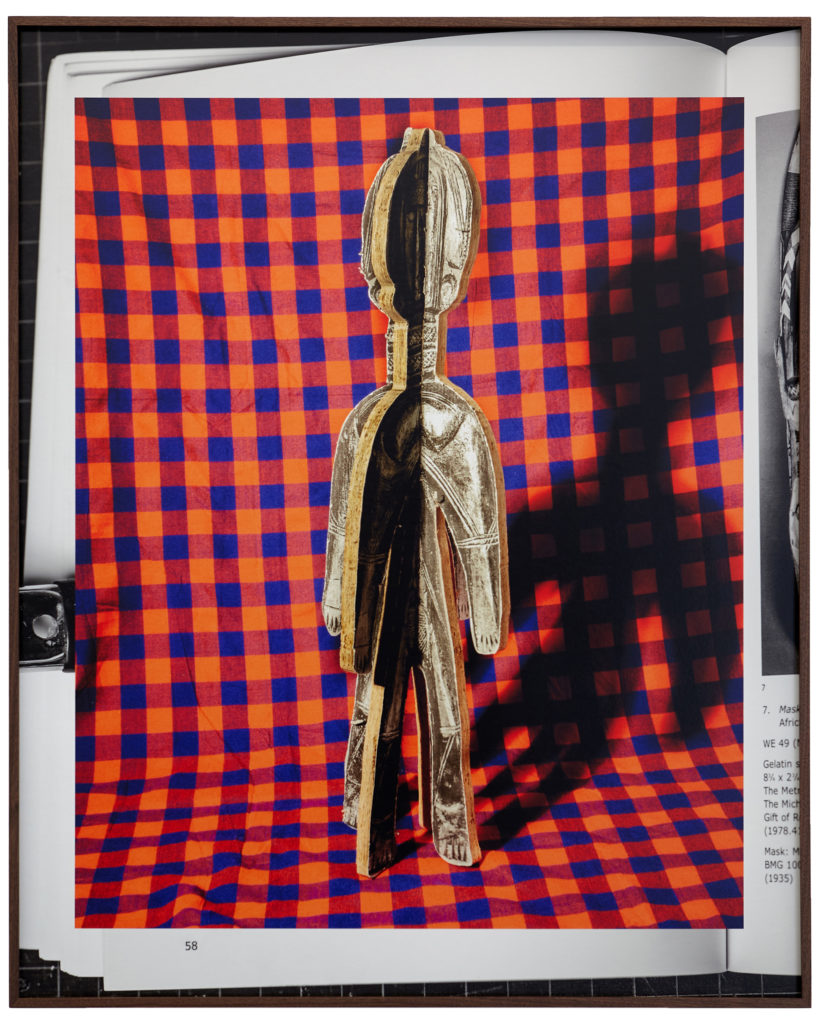
Iduma: I saw the work you made for Topic. It’s phenomenal. It’s a different kind of formal language from your other work, using a different visual vocabulary. The kind of images that you made form a sort of travelogue, even in how you follow the trail of the Great Migration. You write that your work often comes out of formal investigations of the transitions of kinship. I’m interested in what your work does in relation to kinship, through the language of how, for instance, pants are worn. It is almost a universal code of the Black male body, so to speak.
Alekhuogie: In graduate school, I had been making these tapestries from Nike boxes. I was thinking about them as quilts. Then I started taking these tapestries and making [sun prints] with them so there were negatives and positives.
When I was making that work, I was thinking about all these experiments that people were doing with photography and the camera. I was thinking about the Bauhaus and László Moholy-Nagy. And all those visual strategies and influences are very much visible in the work. But you would see a person who did not have access to that art historical reference, yet they would understand, okay, this sneaker came from this thing during this time, and I remember it. So the work became this negotiation of who was the authority on the work.
With Pull-Up, that line of questioning started to be a part of the work as well because some people would see those photographs and situate themselves in that body. Other people wouldn’t do that. Those pictures are about how a body is objectified. There is one person who is actively becoming the person who is looked at. And then there is another person who becomes the person who is looking.
I’m interested in bringing my people to the space. There are various ways to do that. It doesn’t have to be in the work. It could be in the programming. If you have a bunch of institutions, and if they become the authority on the work, that is going to affect or dictate the value. And that power negotiation is really interesting to me on a practical level.

Iduma: What makes your practice expansive is the fact that you are thinking about tactility. This attempt to find not just new audiences or new kinships but also new mediums, alternative mediums. In some of the work at Yancey Richardson, the wax prints become a new form or a framing device. I see a through line from the close-ups of the pants to the close-ups of wax prints. You’ve also spoken about your interest in working with tapestry, this sense of stitching. I’m curious how all of that comes together. What is tapestry in relation to wax prints, and how does it expand on the work that you’ve done with the pants?
Alekhuogie: It really comes from a couple of places. In one way, it’s about this internal war that I have where I’m trying to convince people that the way these decorative forms are utilized globally have to do with labor, and they do a lot of narrative work. There’s this hierarchy of crafts that is really frustrating to me. You can see it in how the history is written. It goes back to my interest in quilt making, which, for me, shows a clear relationship between Black aesthetics. There’s this show at LACMA, which positioned these quilts in the same way that you would think about a lot of modernist paintings. It starts to come down to a lot of these essential ideas in American modernism, which really come down to how we deal with labor.
A lot of the strategies that I’m employing in this new show are about trying to flatten what is traditionally thought of as a clear documentary style with something that has the trappings of decorative art. So I can get these two things to collaborate instead of just being this artist making literary allusions. No, this is also a visual experience.
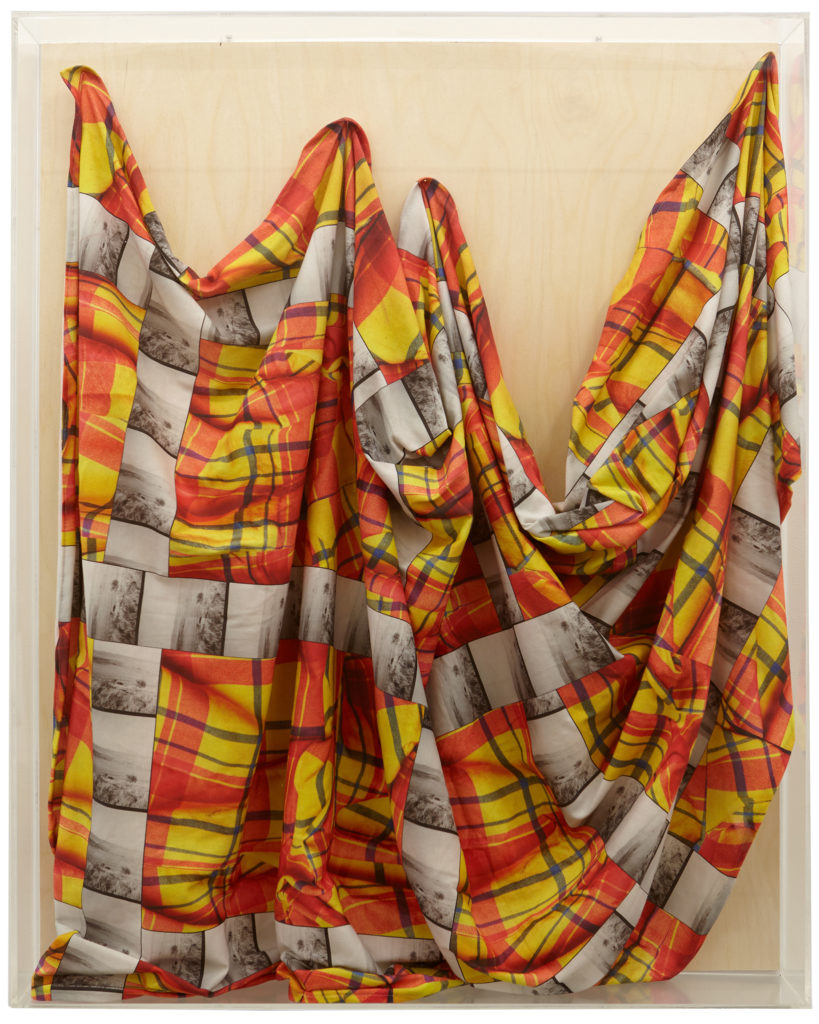
Iduma: Absolutely. And as a final point, the wax prints: Most of the wax prints marketed within Nigeria, for instance, are made outside of it by huge corporations who only recently saw the need to build factories on the continent. So, in the sense of their origin, these wax prints are not African. It’s what you’re saying about the labor that goes into the marketing of these fabrics as African. On one hand, the labor is really market-driven, at least at the point of its origin. But then what becomes interesting, and where the complexity and the tension is, is that they have been imbued with cultural capital by those who wear them. It’s to go back to postcolonial modernism. It’s not simply, this is who we are. It’s what have we become as a result of two contradictory systems.
For me, by using these wax prints to frame the photographs, you claim or even reclaim them as diasporic. And in the sense of the conversation that we need to have about Africa beyond a geographical location about what Africa, or African sensibilities, can become as a result of its diasporic reach.
And To Live and Die in LA—you are taking this phrasing or framing from Tupac, as I heard you say somewhere. The acuteness of that work and that thinking is in how you triangulate Black masculinity, vulnerability, and even disposability. I’m curious about how you sum up or elicit a visual language from such a triangulation. Your mode is abstraction, and you often push beyond realism even if all of it comes from the realistic.
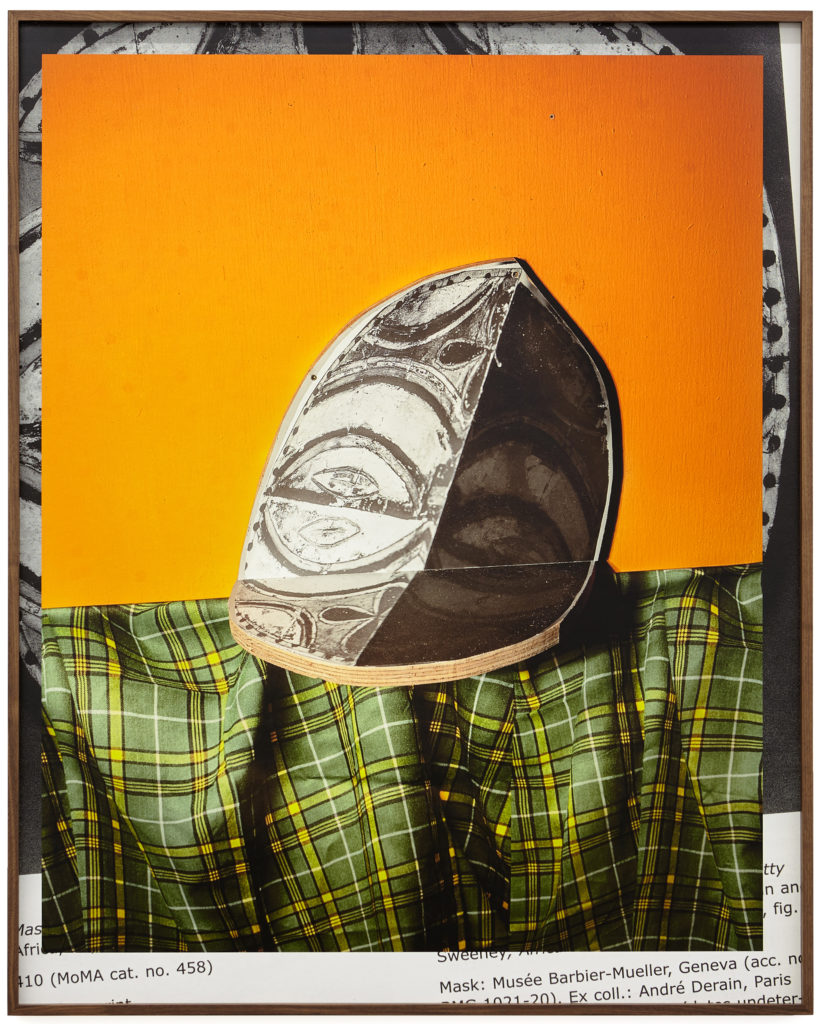
All photographs courtesy the artist and Yancey Richardson Gallery, New York
Alekhuogie: I honestly think—at least, I hope—that most photographers are trying to negotiate this idea of whether they want to be as humanistic as possible while simultaneously trying to be truthful. This is something that I see in my students: there’s this enthusiasm towards trying to speak truth to power. Oftentimes that means being a spectator rather than actively performing. You see it everywhere, like in the George Floyd incident, where the video of this man being murdered becomes this arbiter of change. And the same thing with the Rodney King beating. Or the Emmett Till photograph. The anxiety of photography is really tied up in that, especially now, when people are feeling the need for their work to be politically relevant. And to not just be about their personal experience but more about a kind of shared experience. You have to ask yourself, “What is the cost?” That is what I think about when it comes to art that has the potential to have a social good.
If I have a party, and I play all these records and everybody feels good, there’s no question of whether this was good. Like, hey, no laws might be passed, right? [laughs] But these people feel good in this moment. There is something to that, which oftentimes in a hyper-politicized moment gets overlooked. One of my students told me to watch this movie that is inspired by Tupac’s “Thug Life” tattoo—he uses these letters to symbolize “The Hate U Give.” I watched it on the plane when I was coming back from New York. And I had never felt so emotionally floored. If I hadn’t had my run-in with the police, just in the way that I had so acutely felt my life threatened, I think that I would have responded to it differently.
But that kept me up at night, you know what I mean? I really had to think about how that made me feel. In one way it’s like, yes, this is what it is. But at the same time, it’s crippling. I know that other people go through that too—this sort of social media PTSD. This is the kind of writing I wanna do. I’m curious about people’s relationship to the media in general, and how that informs art and photography.
David Alekhuogie: Naïveté was on view at Yancey Richardson Gallery, New York, from March 6–April 10, 2021.










